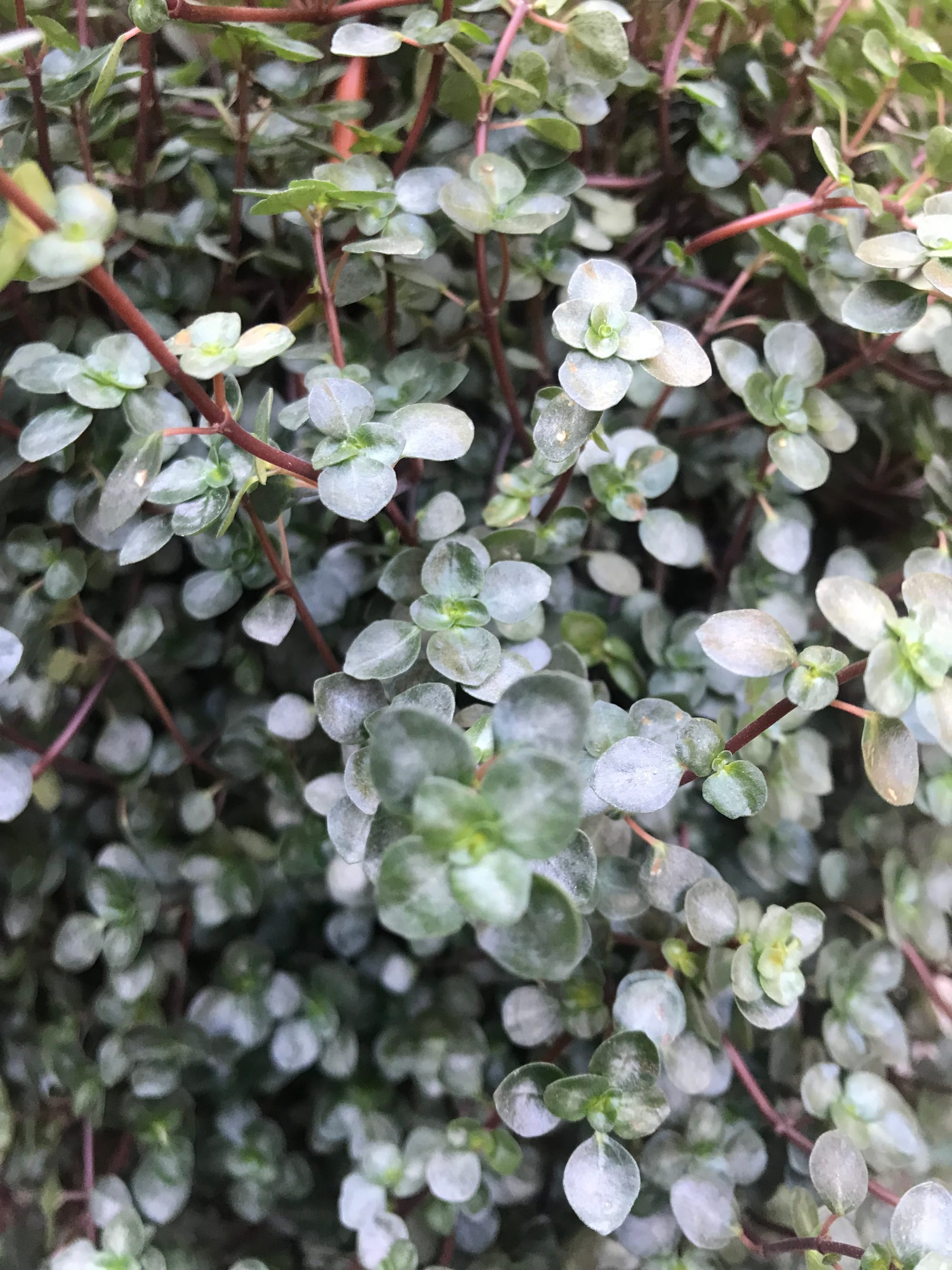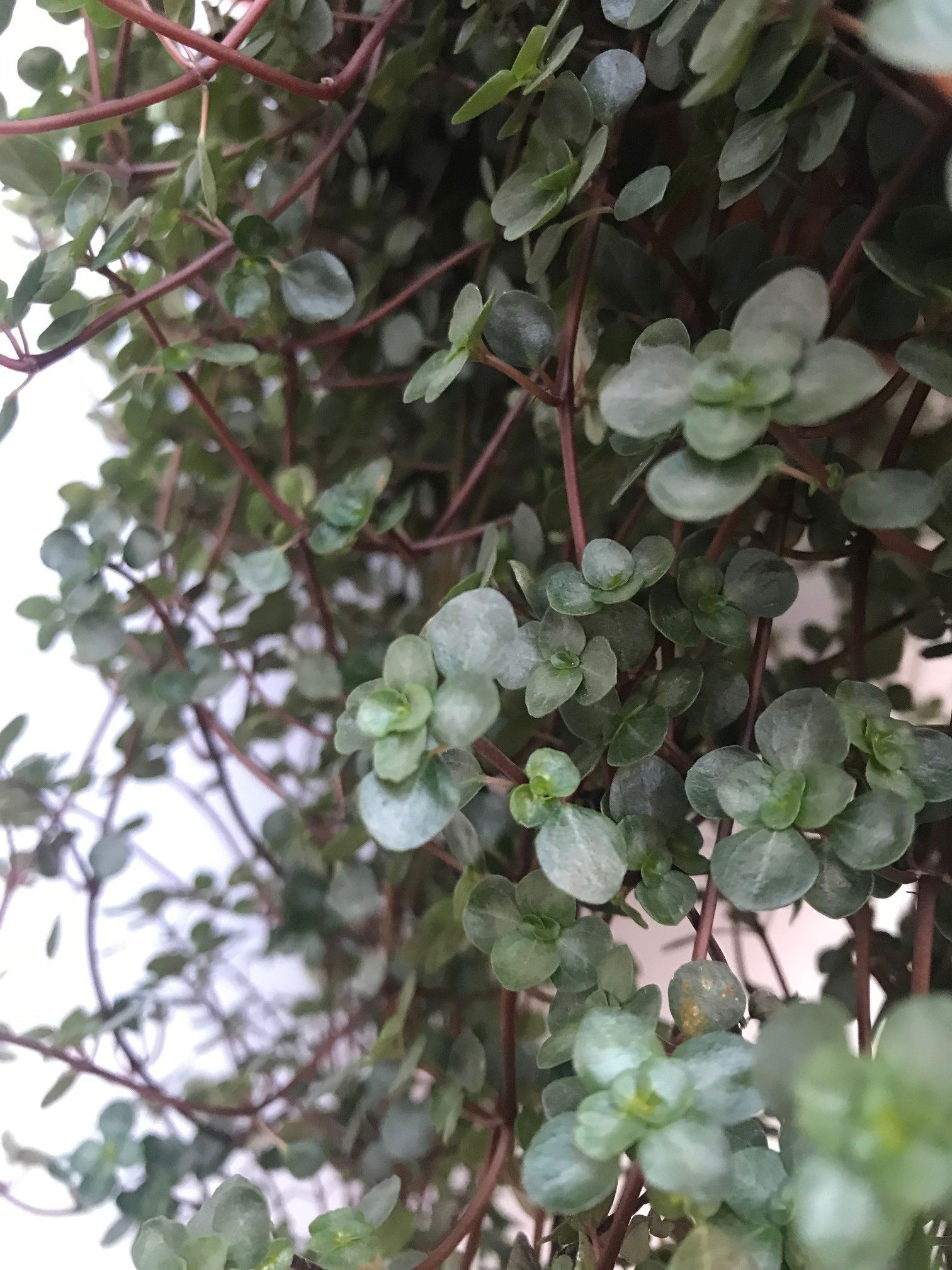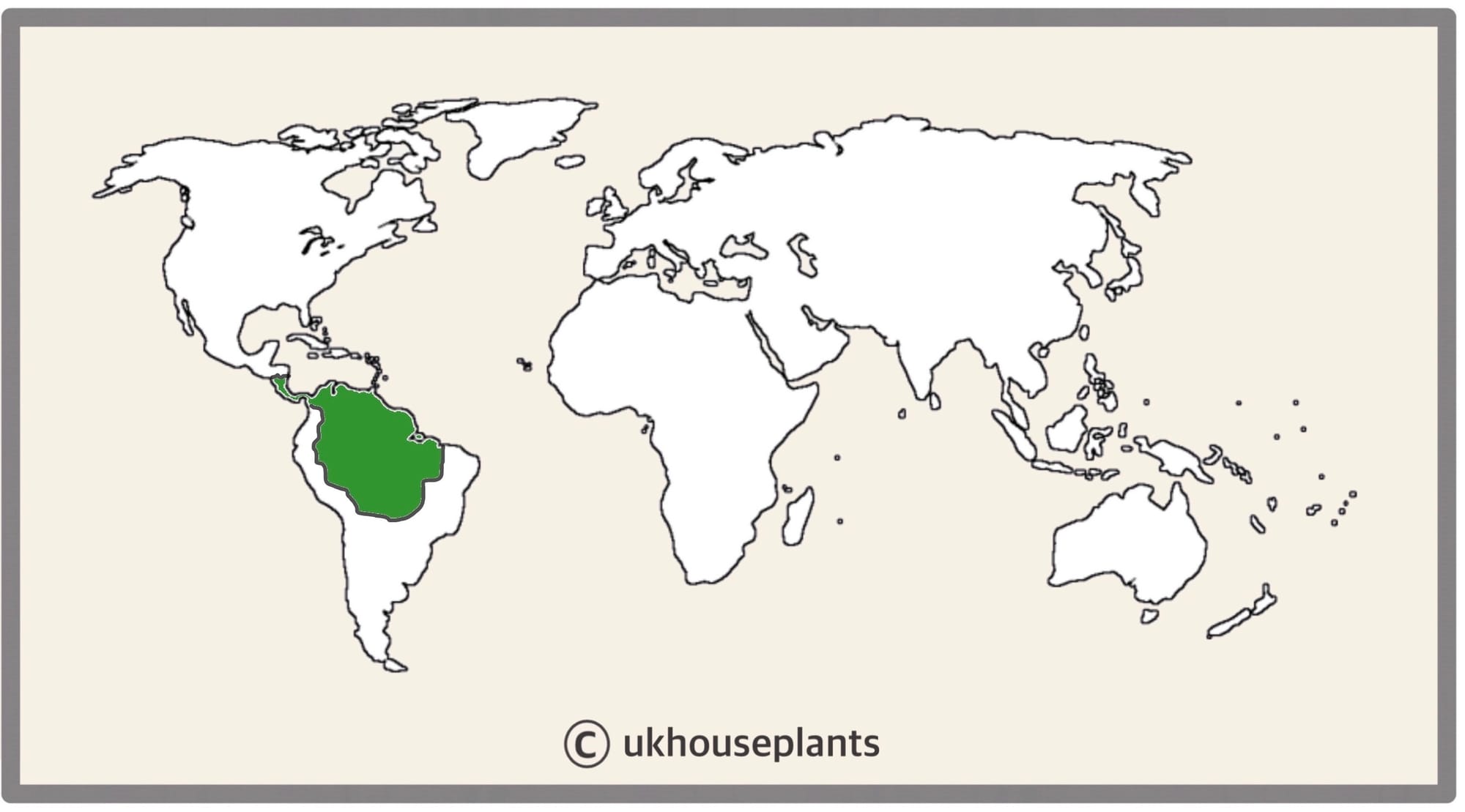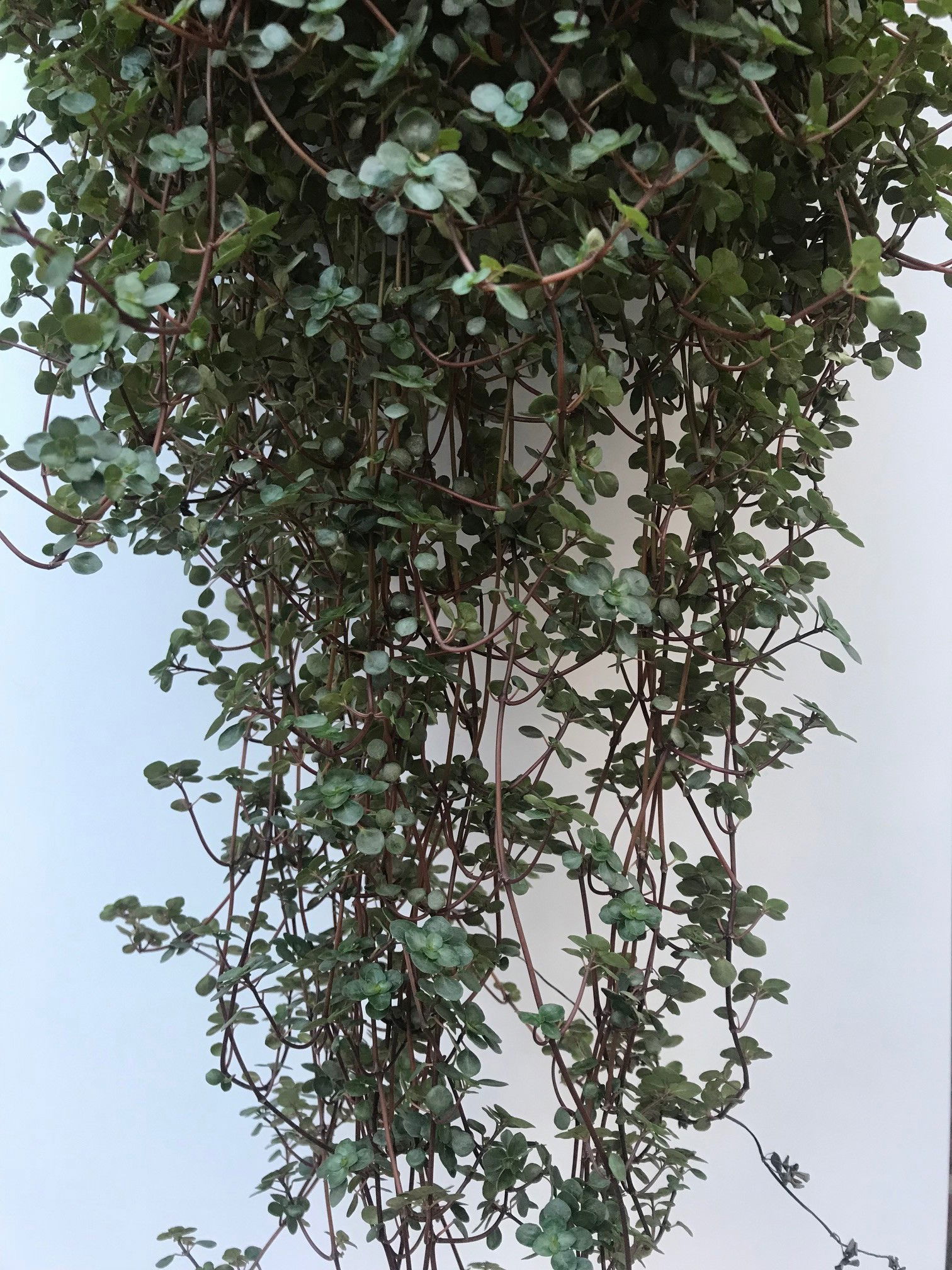
Pilea glaucaphylla 'Greyzy'
Contents
- Top Tips
- Location, Water, Humidity & Fertilisation
- Common Issues
- Origins, Temperature, Propagation, Repotting & Toxicity.
Are you struggling to find the answer to your specific plant issue? Book a 1-to-1 video call with THE HOUSEPLANT DOCTOR™, the website's friendly author, to overcome and address your niggling problem! Available on iMessage, WhatsApp, Facebook Messenger & more.
Top Tips & Info
- Care Difficulty - Moderate
- Bright indirect light is best, avoiding any exposure to the sun (especially in the summer).
- Keep the soil evenly moist at all times. Do not promote droughts of any length due to the high risk of dehydration & death.
- Although average room humidity is acceptable, introduce a humidity tray to aid better growth and the reduction of dehydration & transpiration (water loss in the leaves).
- Fertilise using a 'Houseplant' labelled feed every four waters in the spring and summer, reducing this to every six in the colder months.
- During the spring, repot every three years with 'Houseplant' compost. Water the plant 24hrs beforehand, to reduce the risk of damaging the root hairs (transplant shock).
- 'Tot' specimens in a 5cm pot (available at Blue Diamond stores in the U.K.) are perfect for tropical-themed terrariums or displays due to the ground-covering growth habits!
Location & Light - 🔸🔸
The combination of good soil moisture with a bright, indirect light location will provide the best results for your Pilea. Sunny locations should be avoided at all costs. Prolonged exposure to the sun or dry compost will result in pale leaves, stunted growth and crisping foliage - if it's too hot for a chocolate bar, it'll be too hot for the plant, too. Alternatively, lower-lit areas should only be used, if wholly necessary. Although they can thrive in shady locations, the reduced rates of photosynthesis and too moist soil will lead to a weakened plant, along with the chance of developing root rot.
Water - 🔸🔸
Continual soil moisture is mandatory for this species, due to their poor ability to survive droughts. Rehydrate once the top two inches dries out, using the bottom-up method of submersion. Unnecessarily saturating the leaves may lead to the development of rotten leaves or even powdery mildew when located in a dark environment with poor air circulation. Under-watering symptoms include crispy/curling leaves, a grey, washed-out appearance, yellowing leaves and a lack of new growth - these issues are commonly down to either too much heat/light forgetfulness. Dehydration is the number one issue among growers, so always keep an eye out for drying soil. Over-watering symptoms, on the other hand, include yellowing lower leaves, little to no growth and a rotting stem or leaves. Never promote waterlogged conditions as it'll significantly increase the chance of over-watering and root rot.
Humidity - 🔸🔸
Providing a moist environment is vital for the prevention of under-watering, especially in the winter months while the heaters are operating. Those placed in hangers at height are more likely to experience dehydration due to the movement of heat within a room. Either mist the foliage weekly or introduce a humidity tray to reduce the chance of browning leaf-tips and death.
Fertilisation - 🔸
Feed your plant every four waters using a 'Houseplant' labelled fertiliser in the growing period, before reducing this to every six in the autumn and winter. Never directly apply a 'ready to use' fertiliser without a pre-water beforehand, as it may result in chemical root burn and yellowed leaves.
 Pilea glaucaphylla gets its name from the colour of its leaves (glauca).
Pilea glaucaphylla gets its name from the colour of its leaves (glauca).
Common Issues with Pilea Glaucaphylla
If you still can't find the answer to your specific houseplant problem, book a 1-to-1 video call with THE HOUSEPLANT DOCTOR™ to point you in the right direction today.
Under-watering is the biggest issue, with typical signs including sudden leaf or vine loss, yellowed leaves and stunted growth. If the plant is in direct sunlight, relocate it to a slightly darker area. Increase the amount of waters, too - Pilea tends to grow in moist soil that rarely promotes droughts. As long as you keep an eye out for drying compost, success is inevitable. Those situated in direct sunlight or within three metres of a radiator are most likely to suffer from these issues.
The second most common issue is yellow or rotten foliage developing at the top. Although irrigating from the top is perceived as the most natural way for watering plants, it's recommended that heavy foliaged plants should be watered using the bottom-up method to avoid excess moisture settling on its foliage. If the moisture hasn't evaporated within a few hours, it may cause the leaves to rot that surface the soil. Remove the affected areas and improve your cultivation skills to prevent a further decline.
Never situate it within four metres of an operating heat source, for instance a radiator or fireplace. Due to the heightened temperature, the plant will soak up far more moisture than those situated in cooler locations, increasing the chance of droughts and browning leaf-edges.
Too much sunlight will lead to sun scorch, with typical signs including yellow or browned foliage, dry leaf-edges, sunken leaves or stunted growth. Although too little light will cause over-watering, too much sunlight will be a detriment, too. If yours has fallen short of this, reduce the amount of sunlight considerably and always be mindful of environmental shock (when too locations offer too different growing conditions). Remove the affected leaves and increase waters, whilst keeping in mid the effects of over-watering.
As mentioned before, powdery mildew and southern blight are major threats among heavy foliage plants when excess moisture is allowed to sit on compacted foliage. Remove the affected areas and improve the growing conditions by situating the plant in a brighter location and keeping the leaves dry.
Too-low humidity will cause the browning of leaf tips with yellow halos, commonly caused by nearby operating radiators. As dry air is a big issue among households during the colder months, introducing a humidity/pebble tray will help deter this issue, along with providing better growth. Although this won't help with the already-affected leaves, its new growth will look as good as new. The use of artificial humidifiers are only needed whilst the radiators are operating.
Yellowing lower leaves (closest to soil) is a clear sign of over-watering, usually caused by too little light. Although Pilea can do well in darker locations, the frequency of irrigations must be reduced to counteract the chance of root rot. People don't realise that a plant's root system needs access to oxygen too; when soil is watered, the air will travel upwards and out of the potting mix. A lack of accessible oxygen for the roots will cause them to subsequently breakdown over the oncoming days. Click on this link to learn more about root rot and how to address it, and always feel the pot's weight for confirmation (heaviness = good soil moisture, & vice versa).
Small flies hovering around your plant is entirely natural and may just indicate you're watering a little too often. Fungus Gnats are a common 'pest' with Pilea due to their dependency to reliable soil moisture, but won't pose any risk to the plant's health. Simply replace the top quarter of the plant's potting mix for a fresh batch of 'Houseplant' labelled compost, typical found at most garden centres.
Origins
Unfortunately, little is known about the P. glaucaphylla, except for its natural distribution in tropical America. The genus, Pilea, consists of around seven hundred species, all originating from temperate and tropical locations around the world. Its name was first penned in the 1821 by John Lindley and is derived from the Latin word pileus, meaning 'felt cap' due to the calyx covering the achene. The species' Latinised epithet, 'glaucaphylla' refers to the blue or grey tinge to the foliage.
 The Distribution of Pilea glaucaphylla.
The Distribution of Pilea glaucaphylla.
Temperature
12° - 24°C (54° - 75°F)
H1b (Hardiness Zone 12) - Can be grown outdoors during the summer in a sheltered location with temperatures above 12℃ (54℉), but is fine to remain indoors, too. If you decide to bring this plant outdoors, don't allow it to endure more than an hour of direct sunlight a day as it may result in sun-scorch. Regularly keep an eye out for pests, especially when re-introducing it back indoors.
Spread
Up to 1m in both length and 0.8m in width. The ultimate height will take between 3 - 6 years to achieve, with up to 15cm of growth being put-out each season.
Pruning & Maintenance
Remove yellow or dying leaves, and plant debris to encourage better-growing conditions. While pruning, always use clean scissors or shears to reduce the chance of bacterial and fungal diseases. Never cut through yellowed tissue as this may cause further damage in the likes of diseases or bacterial infections. Remember to make clean incisions as too-damaged wounds may shock the plant, causing weakened growth and a decline in health.
If your plant has a naked base, take stem cuttings by placing their bottom half in water until around 3cm of roots develop. Set the cuttings' lower half back into the original pot and maintain moist soil Do NOT allow the cuttings to sit in direct sunlight or overly dry soil, at least for the first six weeks.
Propagation
Via Seed & Vine Cuttings.
Vine Cuttings (Easy to Moderate)
- Choose which vines to use. The ideal candidates are those that show no sign of damage, pests or diseases, and have small wires roots already-attached. Cuttings that don't have any roots will still root, but it may take a little longer for its propagation.
 The best cuttings are those located at the plant's juvenile portion.
The best cuttings are those located at the plant's juvenile portion. - Delicately prune 8cm (3 inches) vines that are located at the vine terminals.
- Prepare the pot and soil. Choosing a free-draining potting mix, for example, Houseplant Compost, provides a nice balance of moisture-retention and well-drainingness. 7cm (3 inches) pots are best, with both materials (plastic or terracotta) being acceptable.
- Remove the bottom half of the leaves and place the cuttings halfway into the soil. It doesn't matter that the vines will flop over the soil as long as they're submerged halfway into the potting mix.
- Provide a bright, indirect location with temperatures above 18°C (64°F) throughout this period.
- Do NOT pat down the surrounding soil to aid support. The ideal compost conditions need to be fluffy and oxygenated, so compacting it will result in the suffocation of roots that'll lead to root rot. Tap the pot's side to consolidate (not compact) the soil.
- Aftercare - Maintain a moist environment, misting the soil line every few days to prevent dehydration. The ideal location would be in a warm, humid room within a few metres of a window, but out of direct light.
- Place the pot in a transparent bag to maintain high humidity. Open it up every few days to aerate and reduce the risk of airborne disease. Remove any rotten debris as time progresses.
- After another month or two of being in the soil, treat it like a normal houseplant.
Flowers
Small clusters of white flowers will appear midway down the stem and can last up to several days. This process usually gets underway in late spring, but some specimens can flower before, or after this time bracket. Although Pilea will bloom each year, the show is almost uninspiring and is often removed by horticulturalists so that the plant focuses its energy onto the foliage.
Repotting
Repot every three years in the spring using a 'Houseplant' labelled potting mix and the next sized pot with adequate drainage. Hydrate the plant 24hrs before tinkering with the roots to prevent the risk of transplant shock. For those that are situated in a darker location, add a thin layer of small grit in the pot's base to improve drainage and downplay over-watering. Click here for a detailed step-by-step guide on transplantation, or via this link to learn about repotting with root rot.
Pests & Diseases
Keep an eye out for mealybugs, aphids, spider mites, blackfly & root mealybugs. Common diseases associated with this species are root rot, red leaf-spot, botrytis & southern blight - click here to learn more about these issues.
Toxicity
Not known to be poisonous by consumption of pets and humans. If high quantities are eaten, it may result in vomiting, nausea and a loss of appetite.
Retail Locations
IKEA & Online Stores.
Book a 1-to-1 Call with THE HOUSEPLANT DOCTOR™
If you need further advice with your houseplants, book an advice call with ukhouseplants' friendly and expert writer today! This can be done via a video or audio call on most apps, including Facebook, FaceTime & Skype. A ten-minute call costs £5.99 (US$7), or £15.99 for thirty minutes. You can ask multiple questions, including queries on plants, pests, terrariums, repotting advice and anything in between. Please consider supporting this service to keep ukhouseplants thriving!